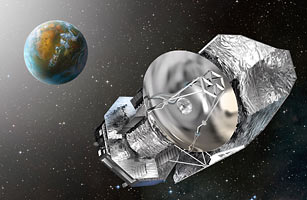
It's no secret that space is cold. But in some places, it's so frigid that light can't radiate in the visible spectrum, which makes celestial bodies invisible. Now the Herschel Space Observatory is exposing them. Launched in May by the European Space Agency, Herschel scans the skies in the infrared spectrum. In order to avoid infrared interference and temperature fluctuations from Earth, it hovers in space at the second Lagrange point, about 930,000 miles (1.5 million km) away, where the gravity of the Earth and sun balance out. Herschel will operate for at least three years, during which it will watch stars and planets being born, revealing more about how the universe came to be.
Herschel is equipped with a mirror 11.5 ft. (3.5 m) in diameter, the largest ever built for use in space. The spacecraft itself is nearly 25 ft. (7.5 m) tall